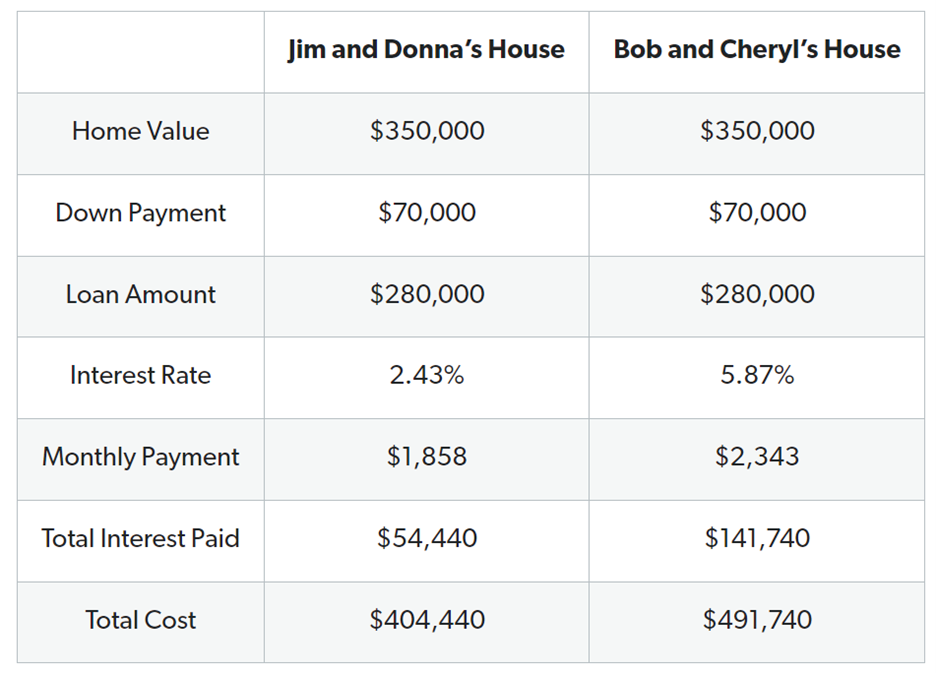Why 90% of Homebuyers Will Continue to Choose Working with Real Estate Agents: Insights from the National Association of Realtors

Members of the National Association of Realtors will continue to be the most reliable partner for the millions of Americans striving to realize the American dream through homeownership.
Specifically, the settlement will prohibit offers of compensation from being shared on multiple listing services (MLSs), the databases that show real estate brokers the properties for sale, and it will require MLS participants to enter into written agreements with their buyers.
These changes will go into effect in mid-late July 2024.
It’s important to note that the National Association of Realtors does not set commissions, and nothing in this proposed settlement would change that. Commissions would continue to be negotiable among buyers, sellers, and their brokers.
The “cooperative compensation” rule that has been subject to litigation says that selling brokers have to specify on each listing an offer of compensation to buyers’ brokers. That offer could be any amount, even zero.
Cooperative compensation, where the compensation a seller pays to their broker is shared, covering the cost of a buyer broker’s services, will continue to be an important option for consumers in all transactions and especially those involving lower and middle-income homebuyers, who may already have a difficult-enough time saving for a down payment.
The bottom line is that consumers will continue to be able to choose what kind of professional real estate advice they’d like–and how much, and how, they will pay for the work of a real estate professional.
Historically, nearly 90% of homebuyers have opted to work with a real estate agent or broker. That figure is unlikely to change.
Even in an era where seemingly everything can be researched and purchased electronically, the clear value added by realtors remains evident. Nine in 10 home buyers would use their agent again or recommend their agent to others.
Seasoned agents and brokers also offer insights into property values, taxes, regulations, and zoning laws while overseeing thorough due diligence processes. And we connect buyers and sellers with other reputable real estate-related professionals such as lawyers, lenders, contractors, and inspectors–any of which can make or break a transaction.
When it comes time to make or evaluate offers, real estate professionals have a decades-long track record as skilled negotiators, ensuring that their clients submit the most competitive bids for their dream home–or hold out for what their home is really worth. And at the settlement table, we help our clients confidently close on what is likely the most significant financial transaction of their lives.
Even post-sale, real estate agents and brokers are crucial advisors for their clients, providing ongoing support, answering queries, and offering guidance as people confront the challenges and delights of homeownership.
NAR’s proposed settlement agreement and the associated practice changes will not change what makes realtors valuable: specialized knowledge, diligence, and a commitment to our clients’ best interests. And it does not change the fact that millions of people will continue to rely on us to help them fulfill their dream of homeownership.
Find the original article here
Why We Aren’t Headed for a Housing Crash

If you’re holding out hope that the housing market is going to crash and bring home prices back down, here’s a look at what the data shows. And spoiler alert: that’s not in the cards. Instead, experts say home prices are going to keep going up.
Today’s market is very different than it was before the housing crash in 2008. Here’s why.
It’s Harder To Get a Loan Now – and That’s Actually a Good Thing
It was much easier to get a home loan during the lead-up to the 2008 housing crisis than it is today. Back then, banks had different lending standards, making it easy for just about anyone to qualify for a home loan or refinance an existing one.
Things are different today. Homebuyers face increasingly higher standards from mortgage companies. The graph below uses data from the Mortgage Bankers Association (MBA) to show this difference. The lower the number, the harder it is to get a mortgage. The higher the number, the easier it is:
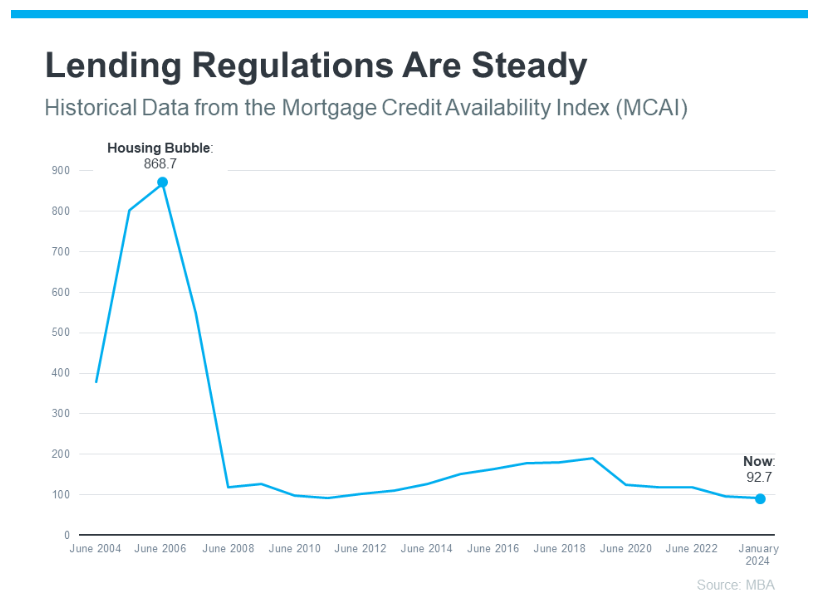
The peak in the graph shows that, back then, lending standards weren’t as strict as they are now. That means lending institutions took on much greater risk in both the person and the mortgage products offered around the crash. That led to mass defaults and a flood of foreclosures coming onto the market.
There Are Far Fewer Homes for Sale Today, so Prices Won’t Crash
Because there were too many homes for sale during the housing crisis (many of which were short sales and foreclosures), that caused home prices to fall dramatically. But today, there’s an inventory shortage – not a surplus.
The graph below uses data from the National Association of Realtors (NAR) and the Federal Reserve to show how the months’ supply of homes available now (shown in blue) compares to the crash (shown in red):
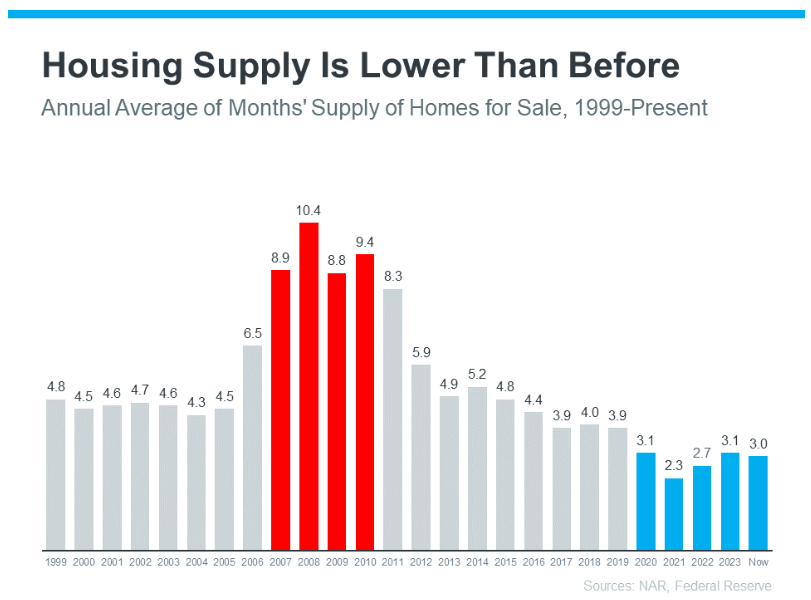
Today, unsold inventory sits at just a 3.0-months’ supply. That’s compared to the peak of 10.4 month’s supply back in 2008. That means there’s nowhere near enough inventory on the market for home prices to come crashing down like they did back then.
People Are Not Using Their Homes as ATMs Like They Did in the Early 2000s
Back in the lead up to the housing crash, many homeowners were borrowing against the equity in their homes to finance new cars, boats, and vacations. So, when prices started to fall, as inventory rose too high, many of those homeowners found themselves underwater.
But today, homeowners are a lot more cautious. Even though prices have skyrocketed in the past few years, homeowners aren’t tapping into their equity the way they did back then.
Black Knight reports that tappable equity (the amount of equity available for homeowners to access before hitting a maximum 80% loan-to-value ratio, or LTV) has actually reached an all-time high:
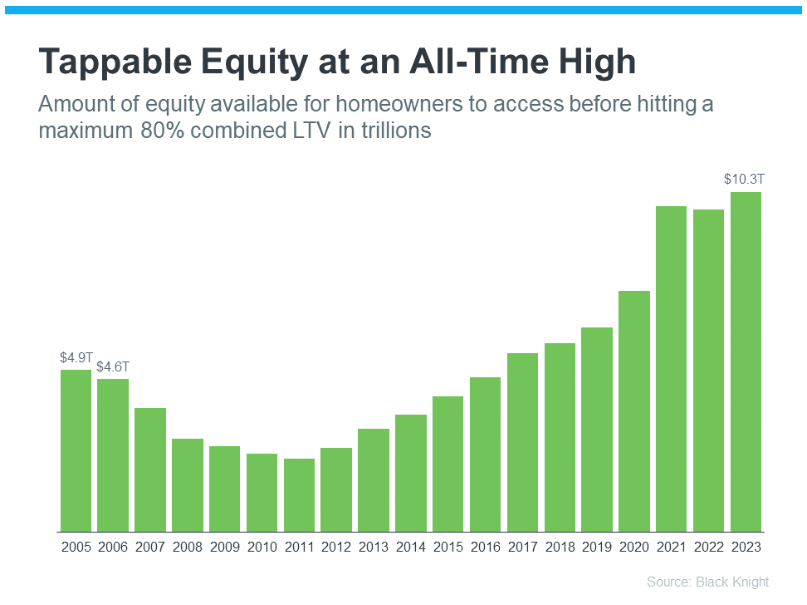
That means, as a whole, homeowners have more equity available than ever before. And that’s great. Homeowners are in a much stronger position today than in the early 2000s. That same report from Black Knight goes on to explain:
“Only 1.1% of mortgage holders (582K) ended the year underwater, down from 1.5% (807K) at this time last year.”
And since homeowners are on more solid footing today, they’ll have options to avoid foreclosure. That limits the number of distressed properties coming onto the market. And without a flood of inventory, prices won’t come tumbling down.
Bottom Line
While you may be hoping for something that brings prices down, that’s not what the data tells us is going to happen. The most current research clearly shows that today’s market is nothing like it was last time.
350,000 Californians are now on the FAIR Plan, the last resort for fire insurance. Now what?

The fire-insurance premium for Bill King’s home has risen 145% since 2017 — from $399 to $979 — under the California FAIR Plan, the state’s last option for homeowners seeking fire insurance.
Add that to the increase in his auto-insurance premium, and King, who lives in Running Springs in the San Bernardino Mountains, is worried.
“What do I do?” asked King, a retiree who will turn 70 years old this summer. “Do I move out of California? At some point I’m going to have to look at things… Will I be able to face future increases depending on how long I’ll live?”
A former Orange County employee, he said he’s having a tough time wrapping his head around the situation: “It’s hard when you’ve planned your retirement and your insurance company comes along and threatens your economic well-being.”
King’s story is similar to that of other property owners who have turned to the FAIR Plan as many insurers have stopped issuing fire insurance in the state, citing climate risks and inflation. As the FAIR Plan has exploded in size — from 126,709 policies in 2018 to more than 350,000 today — homeowners and insurance brokers say they are now facing problems such as delays in mortgage closings, or homeowners losing their coverage.
Recently, King found he was unable to pay for his policy renewal online, as he usually does. He couldn’t email the FAIR Plan because the plan’s website does not provide an email address. Instead, the website tells homeowners to contact their insurance brokers. King’s broker found out that he had been assigned a new policy number without his knowledge. He barely had time to send a payment via his broker, putting him dangerously close to cancellation. Based on his individual experience, King has concluded that the FAIR Plan “is doing everything it can to help policies lapse.”
The FAIR Plan Association, a pool of insurers required by state statute to provide fire-insurance policies when property owners can’t find them elsewhere, is experiencing major growing pains.
The California Insurance Department, which under state law has oversight over the FAIR Plan — including approving its requested rate changes — in 2020 investigated consumer complaints about non-renewals and cancellations. But even after an agreement late last year that included the FAIR Plan vowing to change some of its practices, there continue to be fresh signs of turmoil.
The plan is supposed to be a temporary solution as well as a last resort for property owners, but many people, like King, have been buying insurance through the association for years.
Hilary McLean, a FAIR Plan spokesperson, said the number of policy-holders who stay on the plan has increased over the years; 90% of current FAIR Plan customers are renewing their policies for another year.
The Insurance Department has proposed new regulations, expected to be finalized at the end of the year, to try to get insurers to resume writing fire policies in the state again. But it could be a couple of years until that happens, so the FAIR Plan is likely to continue growing, which could threaten its solvency because it is taking on additional high-risk policies.
“It’s clear that a growing FAIR Plan is a problem for all Californians because of the solvency risks from a major wildfire,” said Michael Soller, spokesperson for the Insurance Department, in an email. “The commissioner’s strategy is focused on returning people to the normal market from the FAIR Plan.”
Last year, lawmakers concerned about the solvency of the FAIR Plan tried to find a legislative solution to address it and other concerns about the state’s insurance market, but no lawmaker sponsored a bill to do so.
A copy of the proposed bill language, seen by CalMatters last week, shows it would have allowed the FAIR Plan to pay for claims by issuing bonds through the California Infrastructure and Economic Development Bank, which provides low-cost financing to state and local government entities. Although the FAIR Plan is not a state entity, the bill would have deemed it “in the public interest” for the FAIR Plan to qualify for financing through the bank.
FAIR Plan President Victoria Roach refused to speak on the record for this story. Spokesperson McLean said the association is dealing with an onslaught of new applications — about 900 a day, down from 1,000 a day last November but up from 350 a day in December 2022. Incoming phone calls nearly doubled over the last half of 2023, to more than 50,000 phone calls a month. The association has hired more people, bringing the number of staff to more than 200 employees plus 80 temporary workers, to help handle the additional workload.
Making matters worse, at the end of last year the FAIR Plan went ahead with long-planned changes to its software system, leading to confusion. McLean acknowledged that led to some homeowners getting kicked off the plan — or as King describes his case, almost getting kicked off — for payment issues.
Georgia, a Placer County homeowner who requested that her last name not be used for privacy reasons, said that in mid-December, her insurance broker informed her the day her premium was due that her payment had not been received, even though the money was in escrow and she later found out that her mortgage company had already paid it. The result: She, her husband and their three kids had to part with $2,380 right before Christmas to pay their premium because they didn’t want to risk losing fire insurance.
“That was my car payment, Christmas, everything we had,” she said. Her broker, mortgage company and the FAIR Plan told her she would get her money back on Jan. 5, she said, but added that she has yet to receive it.
Meanwhile, insurance broker Tyler Nelson said the new system caused delays that led to his clients losing out on loans for homes in escrow. Nelson said he would call the FAIR Plan, wait on hold for three hours and get no help. The new system, called Duck Creek, is “the most awful thing I’ve literally ever dealt with,” he said in an email.
The FAIR Plan would not discuss individual cases and complaints. McLean said the association notified brokers that they were adopting a new system, and offered them training and help. She also said the plan has made changes that “have greatly reduced delays and otherwise improved service levels.”
“In the very rare instance of a policy being canceled in error, the FAIR Plan works diligently to resolve the issue and restore coverage per the customer’s original policy agreement,” she added.
Soller, the spokesman for the Insurance Department, said consumers should contact the department if they have trouble getting coverage from the FAIR Plan.
Even before the FAIR Plan’s software transition, Ann Avalos lost her Auburn home’s fire-insurance policy in 2021 because of a payment issue after her mortgage was sold to another company.
The FAIR Plan “didn’t contact anyone until days before they dropped me,” she said, and refused to give her a grace period or reinstate her. “No communication, customer service, compassion,” she added. Her only recourse was to reapply for another policy, and she said her $2,257 annual premium increased to $3,481. Last year, she said it rose again, to $3,686. And because she can’t get fire insurance anywhere else, she has no choice but to accept the price increases.
Asked to respond, McLean said: “FAIR Plan policy agreements detail customer responsibilities… these responsibilities are consistent with industry standards, such as on-time payments and maintaining the structural integrity of the dwelling.”
“Why wouldn’t they drop you?” Avalos asked, noting that the association’s members are the insurers themselves. “Now they have the opportunity to double what they charge you.”
“We disagree with this characterization,” McLean said. “FAIR Plan rates are approved by the California Department of Insurance and rates are the same for new policyholders and renewing customers.”
The agreement reached by the Insurance Department and the FAIR Plan in November over complaints of non-renewals and cancellations between 2016 and 2019 has led the plan to make changes. One of them is to allow policy-holders to pay a surcharge if there’s a fixable issue on their property, instead of citing it as a reason to cancel their plan. Once the issue is taken care of, the surcharge is canceled. Soller, speaking for the state Insurance Department, said that because of the agreement, the FAIR Plan “should be making it easier, not harder,” for homeowners to renew their plans.
As King thinks about his own insurance worries and his future in California, he has also had to contend with FAIR Plan premium increases for his local church, where he is an associate pastor. A couple of years ago, he said, the fire-insurance premium for the church’s main building doubled from $4,000 to $8,000.
“That’s a lot of money for our little church,” he said, noting that the church’s annual budget was less than $70,000. So instead he shopped around and found a business policy that included fire insurance, which is costing the church about $6,000. “Insurance at times seems like a great evil perpetrated upon us,” he said.
Top 5 Home Renovations with the Best Return on Investment

Well-planned home renovations can really enhance your home’s appeal and amp up its price when it’s time to sell. But not all improvements bring a hefty return on investment (ROI). Knowing the most promising updates can help strategize your revamping efforts for an attractive sale. Read on for a rundown of the top five home improvements likely to supercharge your property’s resale value.
Kitchen Upgrades

A modern, functional kitchen can impress prospective buyers and significantly boost your resale value. But a complete remodel isn’t always necessary when you’re looking for a sizable ROI. If your kitchen already has a good layout, work with what you have and make strategic changes. Key renovations to consider include new countertops, an updated backsplash, a fresh coat of paint, and high-end appliances. Need some swoon-worthy inspiration to get you in the mood? These kitchen updates will make you want to start taking notes and making plans.
Bathroom Remodels
Bathroom updates are next on the list of top ROI home renovations. Your efforts here can range from replacing dated fixtures to a more comprehensive refresh, including a new soaking tub or a sleek walk-in shower. But before you pencil in a new skylight and heated floor tiles, consider every tweak’s necessity and potential upside, as bathroom work – like kitchen updates – can quickly become expensive. But if you can invest more in this space, you’ll likely see significant returns.
Hardwood Flooring
 There’s no question about it – adding or refinishing lackluster hardwood flooring can significantly enhance the value of your home. This type of flooring offers a timeless look that harmoniously blends with various design styles, from boho chic to classic elegance. Besides their aesthetic charm, hardwood floors are sturdy, easy to clean and healthier due to the absence of trapped allergens often found in carpets. Buyers are consistently willing to pay more for a house with hardwood, making this upgrade a wise choice if you can swing it. How much will wood floors cost you? It all depends on the size of your rooms, the style you choose and the tree species.
There’s no question about it – adding or refinishing lackluster hardwood flooring can significantly enhance the value of your home. This type of flooring offers a timeless look that harmoniously blends with various design styles, from boho chic to classic elegance. Besides their aesthetic charm, hardwood floors are sturdy, easy to clean and healthier due to the absence of trapped allergens often found in carpets. Buyers are consistently willing to pay more for a house with hardwood, making this upgrade a wise choice if you can swing it. How much will wood floors cost you? It all depends on the size of your rooms, the style you choose and the tree species.
Eco-Friendly Improvements 
Energy-conscious renovations have been in vogue for a while now. An energy-efficient home attracts a broad range of buyers and contributes to a greener, healthier environment for everyone. Energy-saving windows, LED lighting, Energy Star-certified appliances, higher-rated insulation, an updated HVAC system and solar panels can offer a higher selling price point and significant cost savings for the homeowner.
Adding an extra room or an outdoor living space
Expanding your total livable space can add considerable worth to your home, whether it’s a finished basement, attic or flex space. An additional bedroom or an office are always in demand, especially in this work-from-home era. If expanding indoors isn’t feasible, transform your outdoor area into a relaxing second living room. A deck or patio can be an enticing bonus for buyers looking for more usable square footage at the property. Swanky garage conversions can also provide extra room year-round with unique appeal.
The right home upgrades can substantially increase your property’s value. However, balancing your renovation budget with the prospective benefits is crucial. In addition to this list, research your market and pay attention to what features the top-selling homes in your area offer. Give me a call and I can help you make informed decisions and optimize your home renovations for the best ROI.
Want to Add a Granny Flat or Rental ADU? Here’s How to Finance It
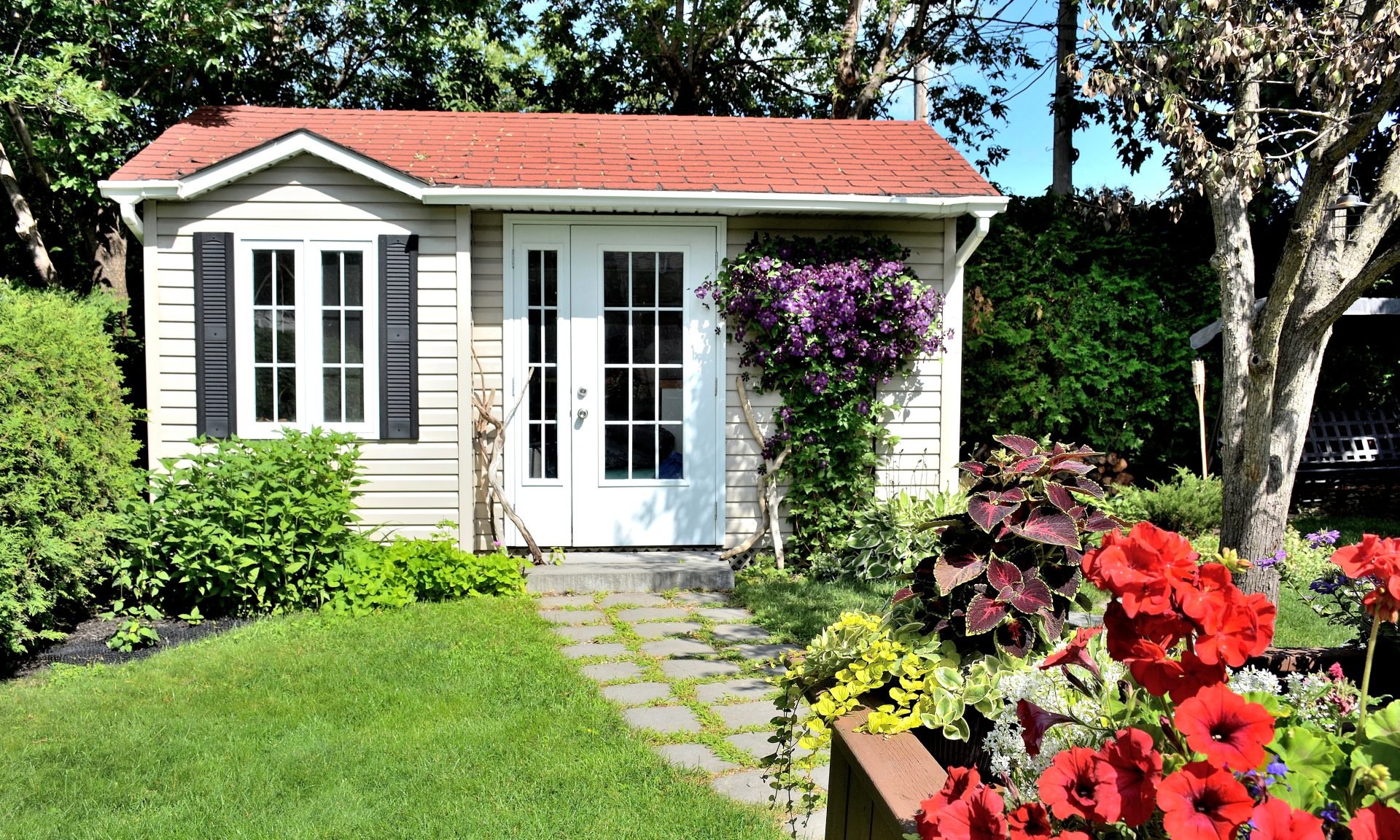
Are you dreaming of adding an accessory dwelling unit (ADU) to your property? Whether it’s a granny flat, carriage house, or backyard cottage, ADUs are gaining popularity as an innovative solution to the shortage of affordable housing in the United States. In this guide, we’ll explore the financing options and trends that make realizing your ADU dream easier than ever.
Why ADUs Are in Demand
The demand for ADUs is on the rise, driven by a shortage of affordable housing in the US. Local and state laws are evolving to make it easier for homeowners to build ADUs, with some areas adopting “by-right approval,” reducing barriers to construction. Homeowners are exploring ADUs not only as a rental income source but also as a way to keep loved ones close by, offering an alternative to expensive nursing homes.
Types of Accessory Dwelling Units
Before diving into financing, it’s crucial to understand the types of ADUs available. From additions to existing structures to stand-alone constructions in the backyard, ADUs can take various forms. Fannie Mae sets basic requirements, such as a separate entrance, kitchen, sleeping space, and bathroom. Local regulations may dictate specifics like parking and utility hookups.
Varieties of ADU Loans
Considering financing options is a key step in turning your ADU dream into reality. Two main approaches exist: borrowing equity or opting for a construction/renovation loan.
1. Borrowing from Equity:
– Ideal for those with sufficient equity and a desire to maintain a low-rate primary mortgage.
– Potential drawbacks include higher interest rates on equity products and borrowing limitations (up to 80% of the home’s current value).
2. Construction or Renovation Loans:
– Suitable when borrowing from equity falls short.
– Allows you to borrow more based on the projected value of your property after ADU construction.
– Drawback includes accepting a potentially higher mortgage rate.
Renting Out Your ADU
If you plan to rent out your ADU, some loan programs may consider a portion of the tenant’s rent as income during the loan application process. This varies by program and may depend on factors like your previous experience as a landlord.
Finding the Right Lender
Whether you decide to borrow equity or opt for a construction/renovation loan, finding the right lender is crucial. Contractors can be valuable sources of lender referrals, helping you assess your financing needs early in the process. Alternatively, you can start by reaching out to a trusted mortgage lender for guidance and potential contractor referrals.
Unlock the potential of your property with an ADU and explore the financing options that align with your goals. From keeping family close to generating rental income, ADUs offer a versatile solution to the evolving housing landscape. Start your journey towards an enhanced living space today!


 Facebook
Facebook
 X
X
 Pinterest
Pinterest
 Copy Link
Copy Link




